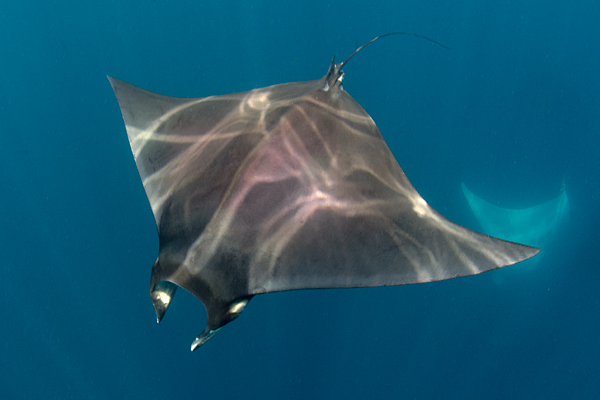Mobula hypostoma
(Bancroft, 1831)
Lesser devil ray
Classification: Elasmobranchii Myliobatiformes Mobulidae
Reference of the original description
On several fishes of Jamaica. Proceedings of the Committee of Science and Correspondence of the Zoological Society of London, 1, 134–135
On several fishes of Jamaica. Proceedings of the Committee of Science and Correspondence of the Zoological Society of London, 1, 134–135
Image of the original description
No image in first description.
No image in first description.
Synonyms / new combinations and misspellings
Aodon hypostomus, Cephaloptera olfersii, Cephaloptera rochebrunei, Cephalopterus hypostomus, Ceratobatis robertsi, Ceratobatis robertsii, Dicerobatis olfersii, Dicerobatus olfersii, Mobula cf. hypostoma, Mobula olfersi, Mobula olfersii, Mobula robertsi, Mobula rochebrunei, Mobula rochebruni, Mobula rochebrunnei
Aodon hypostomus, Cephaloptera olfersii, Cephaloptera rochebrunei, Cephalopterus hypostomus, Ceratobatis robertsi, Ceratobatis robertsii, Dicerobatis olfersii, Dicerobatus olfersii, Mobula cf. hypostoma, Mobula olfersi, Mobula olfersii, Mobula robertsi, Mobula rochebrunei, Mobula rochebruni, Mobula rochebrunnei
Types
Mobula hypostoma
Cephaloptera olfersii
Syntype: MNHN: 9966; ZMB: ?31637 ZMB: 31636 (ex ZMB 8923)
Ceratobatis robertsii
Holotype: BMNH: 1897.7.1.40
Mobula rochebrunei
Holotype: MNHN: A-9967;
Mobula hypostoma
Cephaloptera olfersii
Syntype: MNHN: 9966; ZMB: ?31637 ZMB: 31636 (ex ZMB 8923)
Ceratobatis robertsii
Holotype: BMNH: 1897.7.1.40
Mobula rochebrunei
Holotype: MNHN: A-9967;
Description :
Citation: Mobula hypostoma (Bancroft, 1831): In: Database of modern sharks, rays and chimaeras, www.shark-references.com, World Wide Web electronic publication, Version 05/2025
Please send your images of "Mobula hypostoma" to info@shark-references.com

Mobula hypostoma (Bancroft, 1831) © Andy Murch Elasmodiver

Mobula hypostoma (Bancroft, 1831) © Andy Murch Elasmodiver
Common names
 Diablo,
Diablo,  Manta,
Manta,  Manta chica,
Manta chica,  Manta del Golfo,
Manta del Golfo,  Manta enana,
Manta enana,  Manta negra,
Manta negra,  Raya,
Raya,  Diable géant,
Diable géant,  Mante diable,
Mante diable,  Atlantic devil ray,
Atlantic devil ray,  Devil Ray,
Devil Ray,  Lesser devil ray,
Lesser devil ray,  Manta,
Manta,  Manta ray,
Manta ray,  Small devilfish,
Small devilfish,  Jamanta
Jamanta
 Diablo,
Diablo,  Manta,
Manta,  Manta chica,
Manta chica,  Manta del Golfo,
Manta del Golfo,  Manta enana,
Manta enana,  Manta negra,
Manta negra,  Raya,
Raya,  Diable géant,
Diable géant,  Mante diable,
Mante diable,  Atlantic devil ray,
Atlantic devil ray,  Devil Ray,
Devil Ray,  Lesser devil ray,
Lesser devil ray,  Manta,
Manta,  Manta ray,
Manta ray,  Small devilfish,
Small devilfish,  Jamanta
Jamanta
Short Description
Cephalic fins smaller, tail longer without spine [17658]. Upper surface black [199].
Cephalic fins smaller, tail longer without spine [17658]. Upper surface black [199].
Distribution
Western Atlantic: New Jersey, USA [17658] to Santos, Brazil [20078] and Argentina [5839]. Eastern Atlantic: St. Paul"quot;s Rocks [5002]. Source: www.gbif.org
Western Atlantic: New Jersey, USA [17658] to Santos, Brazil [20078] and Argentina [5839]. Eastern Atlantic: St. Paul"quot;s Rocks [5002]. Source: www.gbif.org
Human uses
fisheries: minor commercial; price category: medium; price reliability: very questionable: based on ex-vessel price for species in this family
fisheries: minor commercial; price category: medium; price reliability: very questionable: based on ex-vessel price for species in this family
Biology
Exhibit ovoviparity (aplacental viviparity), with embryos feeding initially on yolk, then receiving additional nourishment from the mother by indirect absorption of uterine fluid enriched with mucus, fat or protein through specialised structures [733]. Copulation has been observed to be in a venter to venter position while the pair swims at the surface. Mating reported to last 10 minutes. Litter number 1 [1658]. Occurs in shallow coastal waters. Feeds mainly on planktonic crustaceans but may take small schooling fishes. Found singly, in small groups, and in schools.
Exhibit ovoviparity (aplacental viviparity), with embryos feeding initially on yolk, then receiving additional nourishment from the mother by indirect absorption of uterine fluid enriched with mucus, fat or protein through specialised structures [733]. Copulation has been observed to be in a venter to venter position while the pair swims at the surface. Mating reported to last 10 minutes. Litter number 1 [1658]. Occurs in shallow coastal waters. Feeds mainly on planktonic crustaceans but may take small schooling fishes. Found singly, in small groups, and in schools.
Habitat
pelagic-neritic; marine
pelagic-neritic; marine
Remarks
shark-references Species-ID=3747; CITES: (see: Protected Species for more details) Convention on International Trade in Endangered Speciesof Wild Fauna and Flora annex: II; Council Regulation 2017/160 annex: B
shark-references Species-ID=3747; CITES: (see: Protected Species for more details) Convention on International Trade in Endangered Speciesof Wild Fauna and Flora annex: II; Council Regulation 2017/160 annex: B
Parasites (arranged by Jürgen Pollerspöck)
Monogenea
Cestoda
Copepoda
Monogenea
- Mobulicola dubium (Euzet & Maillard, 1967) [19642]
- Mobulicola enantiomorphica Patella & Bullard, 2013 [19642]
Cestoda
Copepoda


















